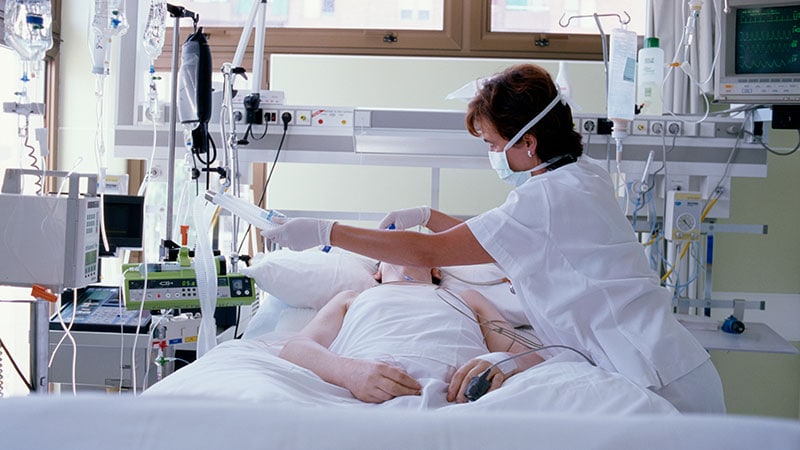Suicide Screenings May Overlook 20% of Those at Risk
About one fifth of people who attempt suicide don't meet the criteria for a psychiatric disorder, a new study suggests. Investigators say the findings point to the need for universal suicide screening, although at least one expert disagrees.
The cross-sectional, population-based study showed that nearly 20% of those who attempted suicide did not meet the criteria for a psychiatric diagnosis at the time. Of those, 14% eventually received a diagnosis, sometimes years after the initial suicide attempt.
"Our findings show that psychiatrically healthy people do attempt suicide," lead investigator Maria Oquendo, MD, PhD, of the Perelman School of Medicine at the University of Pennsylvania in Philadelphia, Pennsylvania, told Medscape Medical News.
When added to existing evidence from other large studies documenting suicide in healthy participants, investigators say the findings help make a case for universal suicide screening.
"Think of it as taking blood pressure for every patient at every visit," Oquendo said. "Many brief, validated suicide screening tools can be used."
The findings were published online on February 21 in JAMA Psychiatry.
'Not Simply a Symptom'
Between April and August 2023, Oquendo and her team analyzed data from the US National Epidemiologic Study of Addictions and Related Conditions III (NESARC-III). That face-to-face survey was conducted between April 2012 and June 2013 among a nationally representative sample of 36,300 individuals ranging in age from 20 to 65 years.
All participants were assessed for Diagnostic and Statistical Manual of Mental Disorders, Fifth Edition, disorders using both recall of past symptoms and the National Institute on Alcohol Abuse and Alcoholism Alcohol Use Disorder and Associated Disabilities Interview Schedule-5 and asked about their history with suicide attempts, if any.
For those with a lifetime psychiatric history, investigators determined how many attempts took place before, in the same year as, or after the onset of the diagnosis.
Investigators found that 1948 participants (5.2%) attempted suicide at least once, and of these, 67% were female.
Overall, 19.6% of those who attempted suicide had no history of a psychiatric disorder before the attempt. Of these, 6.2% had no psychiatric diagnosis at the time they completed the survey, and 13.4% were diagnosed with a mental illness after their attempt, sometimes several years later.
Females were nearly twice as likely as males to report a lifetime suicide attempt (P < .001), and participants between the ages of 50 and 65 were significantly less likely to attempt suicide than those aged 20-50 years (P < .001).
Attempts occurring in the absence of a psychiatric disorder are "not simply a symptom, epiphenomenon, or consequence of disorders such as major depressive disorder or borderline personality disorder, for which suicidal ideation or attempts are diagnostic criteria," the authors wrote.
Is Universal Screening the Answer?
If suicidal behavior was classified as its own psychiatric disorder, it would be easier to document attempts and responses to treatment over time, investigators wrote.
"Policymakers, clinicians, and health systems should weigh the costs and benefits of expanding suicide risk screening beyond the current targets and consider universal screening to prevent suicide attempts," they suggested.
Reached for comment, Paul Nestadt, MD, associate professor of psychiatry at Johns Hopkins School of Medicine, Baltimore, Maryland, disagreed.

"My takeaway from this study isn't that we should be screening more — it's that we should focus on universal prevention strategies such as gun control and safe storage laws," Nestadt told Medscape Medical News. "I have just been frustrated with how much emphasis has been placed on suicide screening when I don't know that it's saving lives — arguably, it creates a lot of false positives."
In a 2020 editorial on universal suicide screening, Nestadt wrote that instruments such as the Patient Health Questionnaire-9 yield "unacceptably high rates of false negatives, with only a 0.3% positive predictive value over 1 year." And the Columbia-Suicide Severity Rating Scale "wrongly promotes the interpretation of active suicidal ideation as suggesting greater risk than does passive suicidal ideation when there is no evidence to support this," he continued.
People without psychiatric illness who die by suicide are often impulsive, and guns make it easier to act on those impulses, accounting for 55% of completed suicides, Nestadt said.
Study limitations include that some psychiatric diagnoses were not assessed by the NESARC-III, and the surveys relied on retrospective self-report.
There was no funding information available. Oquendo reported receiving royalties from the Research Foundation for Mental Hygiene and personal fees from MindMed SAB, Sage Therapeutics SAB, and Alkermes outside the submitted work. Nestadt had no disclosures.


 Admin_Adham
Admin_Adham


